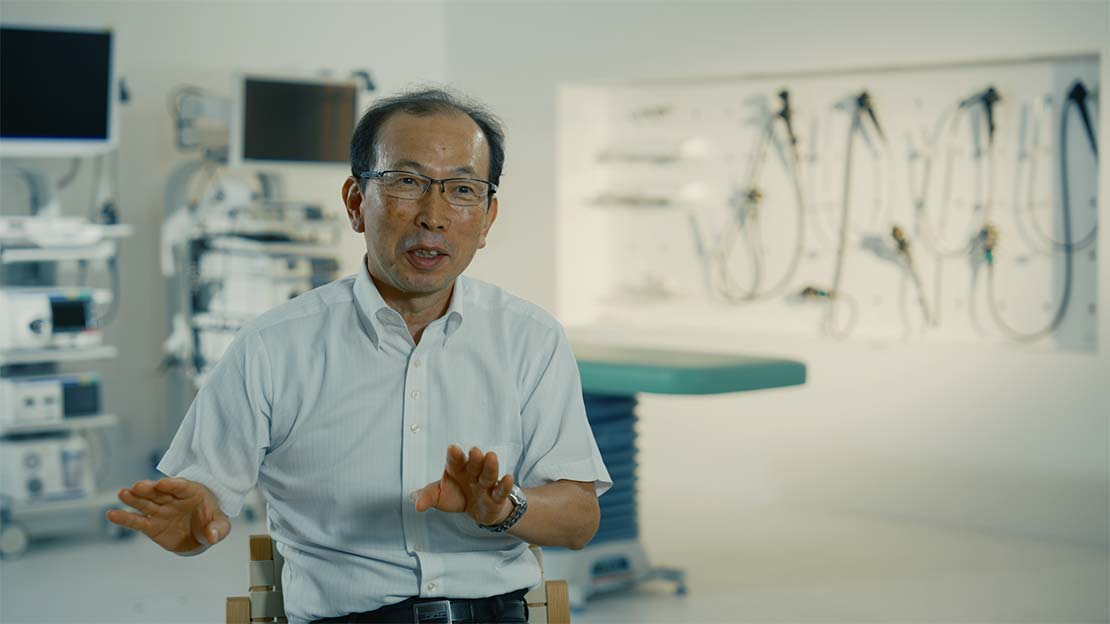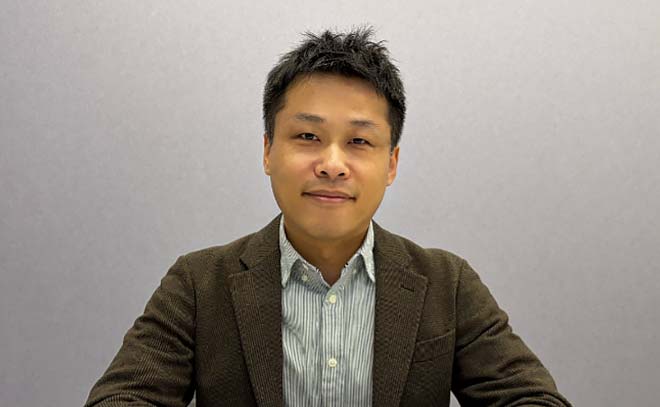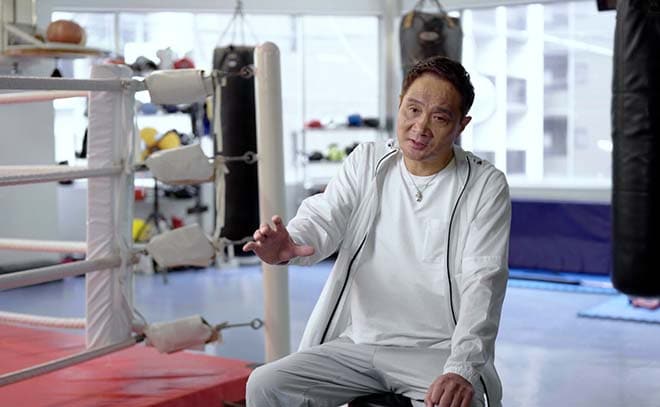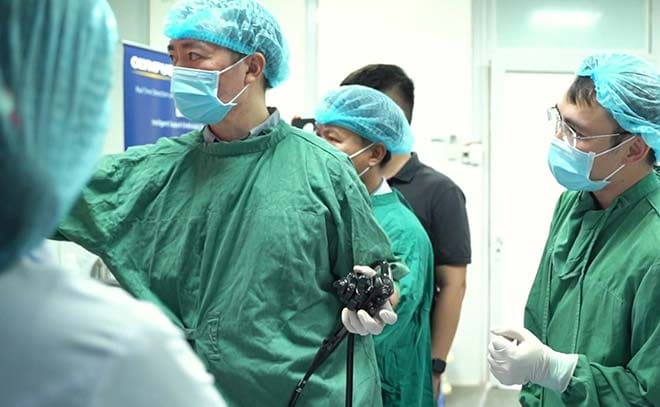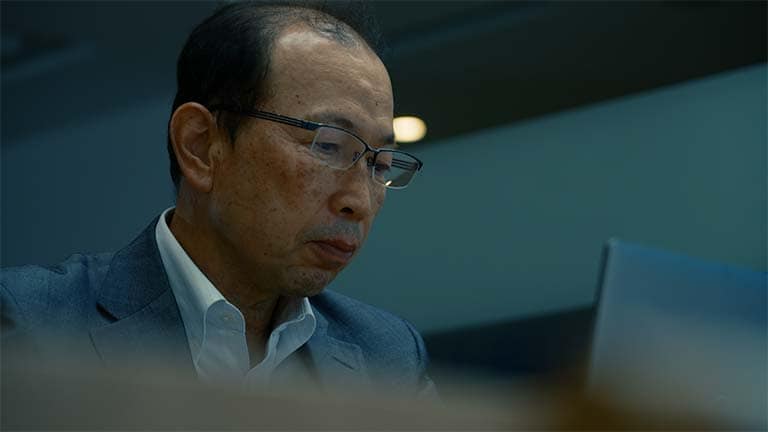
Kenji, who led the EBUS-TBNA development team, grew up in an environment exposed to the world of making things from an early age, as his grandfather was a blacksmith and his father ran a steelworks. Given his background, selecting engineering as his major when he went to university was a natural choice for Kenji.
Kenji first became involved in the development of EBUS-TBNA in 1997. What triggered the development effort was a request from a thoracic surgeon in Denmark, who wanted to use an ultrasonic device as a guide while inserting a needle into lymph nodes around the bronchi to collect tissue samples. This would require the development of an ultrasonic bronchial endoscope capable of observing the lymph nodes located behind the bronchial wall, and an aspiration biopsy needle for collecting tissue samples. Initially the team tried to achieve these "observe" and "sample" functions through the combining of Olympus Medical Systems' existing technologies but faced major challenges with both the scope and the aspiration biopsy needle.
The big challenge with the scope was the thickness of the insertion section. At the time, the method of collecting tissue samples while viewing images from an ultrasonic endoscope had already been established in the field of gastroenterology. However, since it is necessary to secure an airway (a path for air to pass through) in the bronchi, the section of the scope that is inserted needed to be much thinner.
"We took prototypes to a doctor in Denmark three times, but we were unsuccessful all three times. Our tests had gone well on bench-top testing, but when we checked the tissue samples using organs that doctors had removed, it didn't go as expected." (Kenji)
After several unsuccessful attempts, the breakthrough came with the fourth prototype, which incorporated an innovative solution. Until then, the team had been making improvements based on the existing mechanical scanning method, but in the fourth prototype, they adopted an ultra-compact electronic scanning method that was being developed internally. This technological development immediately resolved the issues they had been facing, leading to the completion of a scope that met the required specifications.
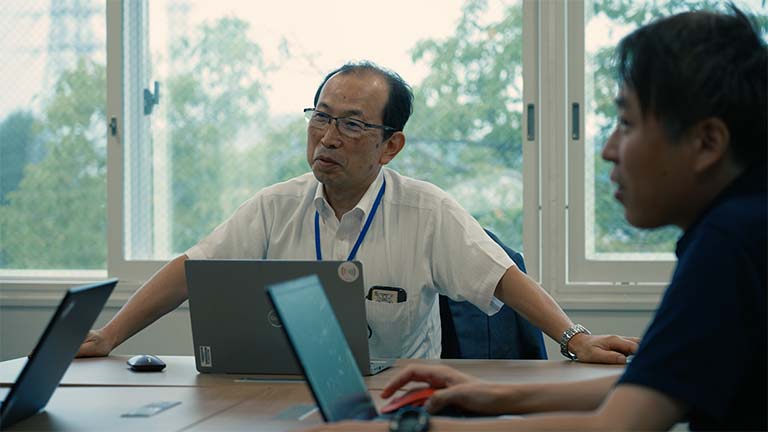
However, in the development of the aspiration biopsy needle, the opinions of doctors in Japan and overseas were split on the issue of needle puncture depth, also referred to as stroke length. While the overseas doctors advocated a 4cm puncture depth to collect more cells, Japanese doctors argued for a 2cm puncture depth, citing safety concerns. Olympus was placed in a difficult position being in the middle of the two parties.
"If we were to make both devices, it would mean that if we accepted a 4cm depth, we wouldn't be able to explain why it was safe, and if we compromised with a 3cm depth, there is no strong rationale for this length, other than taking the median of the two depths. We thought over this dilemma from morning to night and still couldn't come up with an answer." (Kenji)
Then one day, as Kenji was taking a walk, an idea came up to him suddenly. "I got it! What if we inserted a stopper at the 2cm position!" Giving the device a default 2cm puncture depth where a doctor could enable a 4cm depth by removing a stopper ensured that doctors could use their own judgment to select either length. It was an extremely creative solution that gave the doctors what they needed while controlling costs.
After the scope and aspiration biopsy needle were completed, a group of doctors from Japan, US, and Europe worked with Olympus to develop a training program for safe examination and diagnosis. The doctors who had been involved in developing the program then served as instructors for the first training course which was held in Germany. Many participants were excited by the innovation that Olympus had developed together with doctors. The first training session was a great success, and subsequent training courses have been held around the world, helping to disseminate EBUS-TBNA to a wider audience.
By Kenji's accounting, the birth of EBUS-TBNA was supported by Olympus' DNA, a deeply ingrained approach to collaborative creation that has been passed down through generations.
"If you look back at the history of how the gastroscope was developed, you can see that the technologies were developed collaboratively amongst the users, the doctors, and engineers. The same thing happened in the development of EBUS-TBNA. A power beyond human understanding is formed when doctors who are willing to help innovate to save the lives of their patients, and engineers who refuse to give in no matter how many failures they experience, come together with a common goal. I think that is the secret to success. The DNA of Olympus lies in not only listening to user feedback with sincerity, but in working together with users to come up with solutions based on that feedback." (Kenji)
※ This story is based on interviews conducted in August 2024.



